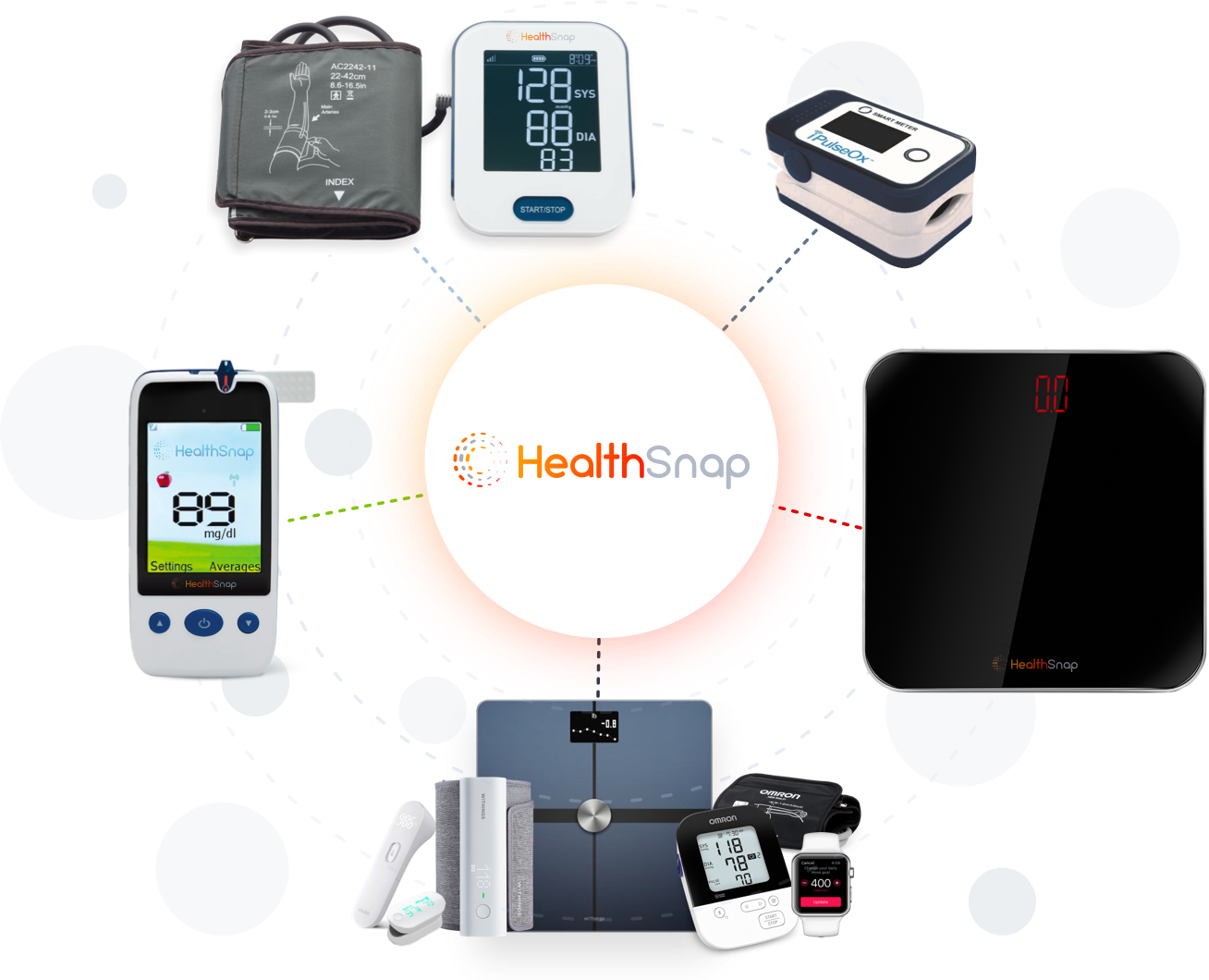This year’s HLTH conference, known as healthcare’s top tech and innovation event, brought together over 10,000 attendees to explore the latest technological developments and breakthroughs in the healthcare industry. With a diverse array of topics, the event provided comprehensive insights into the innovative approaches that are transforming the healthcare industry. In this article, we discuss some of the most significant takeaways and digital health trends that emerged from HLTH 2023.
Consumerization of Healthcare: The Power Shift
The consumerization of healthcare represents a fundamental paradigm shift in the industry, empowering patients to take control of their healthcare decisions. In an era where consumer expectations are shaped by user-friendly, accessible online experiences, individuals now demand the same level of convenience and transparency in their healthcare journey. This trend is driven by the need for patients to have more information and choices when it comes to their health.
Patients are increasingly seeking transparency in healthcare costs, quality, and options, mirroring the way they approach e-commerce. This shift towards consumerization holds the promise of revolutionizing how patients interact with the healthcare system.
By incorporating excellent consumer design and providing clear visibility into the costs and quality of healthcare services, healthcare providers and organizations can enable individuals to make more informed, confident choices regarding their health and well-being. This trend signifies a transformative power shift from healthcare service providers to consumers, offering the potential for more patient-centric care.

Team HealthSnap at the 2022 HLTH Conference
Preventative Care: A New Paradigm
Preventative care is experiencing a significant paradigm shift, challenging the traditional model that primarily focuses on treating illnesses after they manifest. With the United States spending significantly more on healthcare per capita than other developed nations, yet often lagging behind in health outcomes, the need for this transformation is evident. Adopting preventative care models can reduce healthcare costs, improve patient outcomes, enhance care access, and alleviate workforce shortages in the industry.
Focus on prevention through regular check-ups, screenings, and lifestyle interventions can identify health risks and diseases in their early stages, allowing for timely interventions that can ultimately lead to better health outcomes. The shift towards preventative care reflects a commitment to proactive wellness and patient-centered care, emphasizing the importance of keeping individuals healthy rather than solely treating them when they fall ill. This change in approach signifies a positive step towards a more efficient and cost-effective healthcare system.

Telehealth Expansion: Bridging Gaps
The rapid expansion of telehealth is bridging critical gaps in healthcare access and delivery, transforming how patients receive care. Telehealth leverages digital health platforms to facilitate remote consultations, diagnosis, monitoring, and treatment, breaking down geographical and logistical barriers that once hindered access to healthcare services.
Especially in the wake of the pandemic, telehealth has emerged as an essential tool, offering safe and convenient access to healthcare professionals. Patients can now consult with their doctors from the comfort of their homes, eliminating the need for time-consuming commutes and reducing the risk of exposure to infectious diseases.
Moreover, telehealth is instrumental in addressing healthcare disparities, ensuring that underserved and remote communities have access to quality care. It provides a lifeline for those who might otherwise struggle to reach healthcare facilities, making healthcare more equitable.
As telehealth continues to evolve and gain widespread acceptance, it has become a vital component of the modern healthcare era, improving healthcare access and patient outcomes while reducing costs and enhancing convenience.
AI in Healthcare: A Game Changer
Artificial intelligence (AI) is poised to revolutionize healthcare, emerging as a game changer in the industry. As technology continues to advance, AI is making significant inroads, with its impact felt across various facets of healthcare.
AI-powered applications are enhancing diagnostics, improving treatment planning, and personalizing patient care. Machine learning algorithms are sifting through vast datasets to identify patterns and anomalies, aiding in early disease detection and preventive interventions. AI-driven robotic surgery is increasing precision and reducing the margin of error. Chatbots and virtual assistants are streamlining administrative tasks and improving patient engagement.

Moreover, AI is poised to bolster research and drug discovery, accelerating the development of new therapies and treatments. The potential of AI in healthcare is boundless, promising more efficient, cost-effective, and patient-centric care. It’s a game changer that is set to redefine healthcare delivery in the years to come, especially with innovations in virtual reality, augmented reality, and more.
Value-Based Care: Focusing on Outcomes
Value-based care represents a significant shift in healthcare delivery, emphasizing the importance of outcomes over the volume of services provided. This approach is gaining traction as it aligns the interests of healthcare providers with the well-being of patients. Value-based care models emphasize the delivery of high-quality care, improved patient outcomes, and cost-efficiency.
Providers are incentivized to keep patients healthy and manage chronic conditions effectively, as these efforts result in better outcomes and reduced healthcare costs. This profound shift encourages preventive care, early intervention, and patient engagement, promoting a holistic approach to healthcare. It also drives the adoption of technology and data analytics to monitor and improve patient health.
Ultimately, value-based care is about improving the overall health and well-being of patients while reducing the financial burden on both individuals and the healthcare system. It is a progressive approach that focuses on outcomes and patient satisfaction, offering a promising future for healthcare delivery.
Digital Health Adoption: The Future is Now
Digital health adoption is rapidly transforming the healthcare sector, offering innovative solutions that enhance patient care and streamline healthcare processes. The convergence of technology and healthcare is redefining how patients and providers interact, making healthcare more accessible, efficient, and patient-centered.
Telehealth services have surged, enabling remote consultations and Remote Patient Monitoring (RPM), using cellular-enabled medical devices. These services are particularly beneficial in times of public health crises. Mobile health apps empower individuals to manage their health proactively, track vital metrics, and access medical information. Electronic health records (patient records) enhance real-world data management and facilitate better decision-making.

Artificial intelligence and machine learning contribute to diagnostics, predictive analytics, and personalized treatment plans. Wearable life sciences devices and sensors provide continuous health monitoring, offering valuable insights for early intervention.
The adoption of digital health solutions not only improves patient outcomes but also increases healthcare accessibility, reduces costs, and enhances the overall patient experience. As the healthcare industry adopts these innovations, the future of healthcare is increasingly patient-centric and digitally driven.
Innovations in Data Analytics: Leveraging Big Data
Innovations in data analytics are creating a digital transformation of the healthcare industry by harnessing the power of big data. With the proliferation of electronic health records (EHRs), wearable devices, and interconnected healthcare systems, the healthcare sector is generating vast amounts of data. Advanced data analytics and artificial intelligence (AI) are now being employed to extract actionable insights from this wealth of information.
Big data analytics and business models enable healthcare providers to identify trends, predict disease outbreaks, and optimize treatment protocols. It facilitates personalized medicine by tailoring treatments to individual patients’ genetic and clinical profiles. Real-time monitoring of patient data helps in early disease detection and intervention.
Furthermore, data analytics enhances healthcare operations, streamlining administrative processes and improving resource allocation. By leveraging big data, the healthcare industry can make more informed decisions, enhance patient care, and reduce costs, ultimately creating a more efficient and patient-centric healthcare ecosystem.
Interoperability: Seamless Data Exchange
Interoperability is an important element of modern healthcare, enabling seamless data exchange between various healthcare systems, providers, and organizations. It ensures that vital patient information, such as medical records, test results, and treatment plans, can be shared securely and efficiently across the healthcare ecosystem.
Effective interoperability offers numerous benefits. It reduces redundancy, streamlines care coordination and enhances patient safety by providing healthcare professionals with comprehensive patient histories. Moreover, it empowers patients to access and share their health data, actively participating in their care.

The adoption of interoperability standards, like HL7 and FHIR, facilitates this exchange. The push for interoperability is driven by federal regulations, such as the 21st Century Cures Act, which mandates that healthcare organizations share electronic health information.
As healthcare becomes increasingly data-driven, interoperability is fundamental for delivering high-quality care and improving patient outcomes. It not only enhances the efficiency of healthcare delivery but also drives medical innovations and research in the field.
Health Inequities: Addressing Disparities
Health inequities represent disparities in healthcare access, outcomes, and quality that are rooted in social, economic, and environmental factors. Addressing these disparities is a top priority in healthcare, as it reflects a commitment to providing equitable care for all individuals, regardless of their background or socioeconomic status.
Efforts to combat health inequities involve implementing policies and programs that target underserved communities and vulnerable populations. This includes improving access to healthcare services, reducing barriers to care, and addressing the social determinants of health, such as poverty and education.
Additionally, healthcare providers are encouraged to adopt a culturally competent approach, ensuring that care is sensitive to the diverse needs of patients. Collaboration between public health agencies, healthcare organizations, and community groups is essential in the fight against health inequities.
By focusing on reducing disparities in healthcare access and outcomes, the healthcare industry can strive towards a more equitable and inclusive future, where everyone has the opportunity to achieve optimal health and well-being.

Mental Health Revolution: A Resolute Commitment
The mental health segment is undergoing a profound transformation, marked by a resolute commitment to addressing the persistent issues that affect millions of individuals, from adults to children. While progress has been made in reducing the stigma surrounding mental health, the challenges persist, with a significant percentage of the population still grappling with mental health issues.
Technology has emerged as a powerful ally in this endeavor. Telehealth platforms and mobile applications are expanding access to mental health services, eliminating barriers, and reaching the ones in need. Artificial intelligence and machine learning are employed to analyze vast datasets, detecting early warning signs of mental health problems, and enabling timely interventions. Wearable devices and sensors provide clinicians with valuable insights into patients’ mental well-being.
These innovations not only enhance accessibility but also offer personalized treatment options, empowering a more proactive and effective approach to addressing mental health challenges. The resolute commitment to revolutionize mental health care signifies a promising path towards better mental well-being for individuals across the spectrum.
Workforce Challenges: Addressing Shortages
The healthcare industry is facing a critical challenge – workforce shortages. As the demand for healthcare services continues to rise, a shortage of skilled professionals is straining the system. This crisis extends to various healthcare roles, from physicians and nurses to allied health professionals.
Addressing these shortages is vital to ensuring access to quality healthcare. Strategies such as expanding medical education programs, offering incentives to attract and retain healthcare professionals, and leveraging technology like telemedicine to extend the reach of existing staff are being explored.
In addition, reevaluating scope of practice regulations to allow non-physician providers to perform a broader range of services can help alleviate the strain on physicians. Collaboration between healthcare organizations, educational institutions, and policymakers is essential to develop comprehensive solutions to tackle workforce shortages and ensure that patients receive the care they need in a timely manner.
Regulation and Compliance: Navigating the Complexities
Regulation and compliance play a pivotal role in shaping the healthcare industry. In an environment marked by evolving standards – some of it not based on logic, it’s essential for healthcare organizations to navigate the complex regulatory landscape effectively. These regulations encompass patient data protection (HIPAA), quality of care (CMS), and safety standards (FDA), among others.
Healthcare providers must implement robust compliance programs to adhere to these regulations. This involves investing in secure health information systems, data encryption, and staff training to protect patient data. Organizations must also adapt to value-based care models and health plans, which focus on patient outcomes and require reporting and compliance with CMS guidelines.

Engaging in proactive risk management and staying updated on regulatory changes ensures compliance and mitigates the risk of penalties. In this ever-changing environment, understanding and adhering to healthcare regulations are paramount, safeguarding both patient well-being and an organization’s reputation.
The Future of Patient Care: A Holistic Approach
The future of patient care is evolving towards a holistic approach that emphasizes comprehensive well-being. This approach recognizes that health extends beyond the absence of disease and encompasses physical, mental, and social aspects. Holistic patient care integrates various elements, including preventive care, early intervention, lifestyle management, and personalized treatment plans.
It leverages advanced technologies such as Remote Patient Monitoring (RPM), artificial intelligence (AI), and telehealth to provide more accessible, patient-centered care. Patients are empowered to actively engage in their health management, with data-driven insights guiding them toward healthier lifestyles.

Moreover, holistic care seeks to reduce health inequities and address disparities in healthcare access and outcomes. It fosters a patient-provider partnership that focuses on shared decision-making and emphasizes the importance of mental health support. By adopting a holistic approach, the healthcare industry is shifting towards a more proactive, patient-centric model that aims to improve overall well-being and enhance the quality of life for individuals and communities.
HealthSnap’s Virtual Care Management Platform is Changing the Way Care is Delivered to Patients
HealthSnap’s Virtual Care Management Platform is revolutionizing the management of chronic diseases by offering continuous, proactive, and remote patient care to high-risk chronic populations. HealthSnap is HIPAA-compliant and HITRUST-certified, ensuring the highest standards of compliance, reliability, and security to support seamless care coordination on a large scale.
To learn more about HealthSnap’s virtual care management programs and to schedule a free demo, call us today at 888-780-1872 (Ext. 3) or click here to set up a consultation with our experts.










